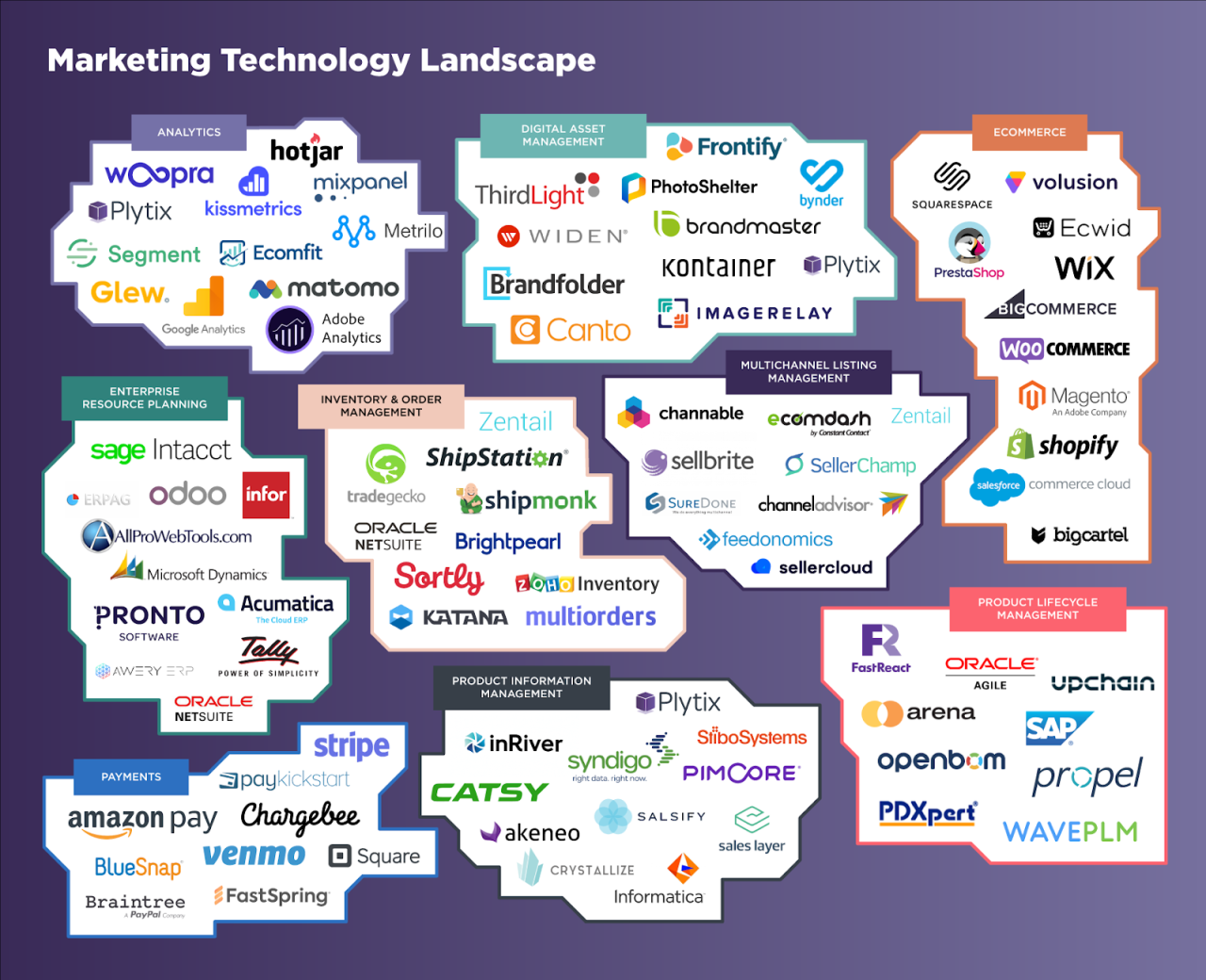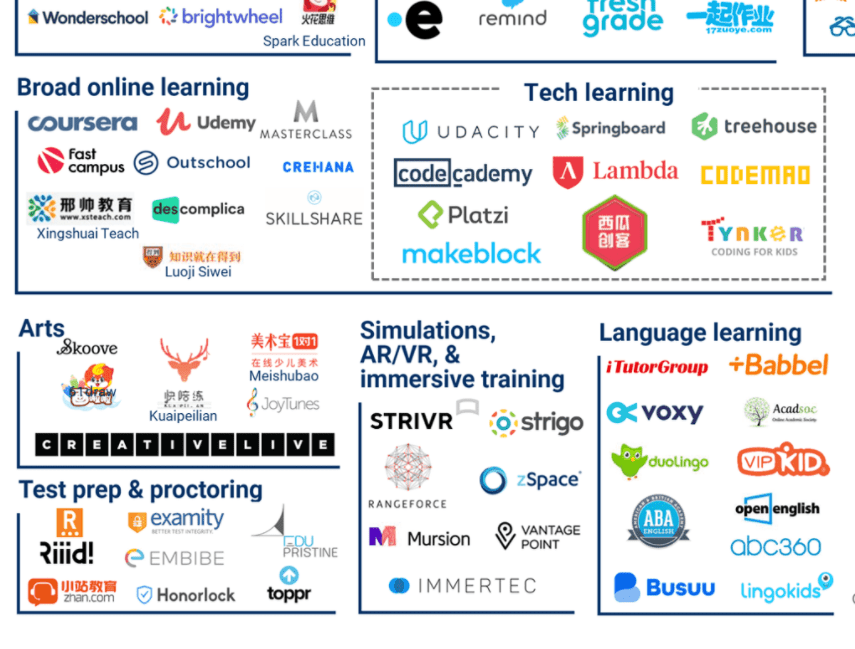E-commerce Technology Stack: Building Online Success
E commerce technology stack – The e-commerce technology stack is the foundation upon which modern online businesses are built. It’s a carefully curated collection of technologies, platforms, and tools that […]

E commerce technology stack – The e-commerce technology stack is the foundation upon which modern online businesses are built. It’s a carefully curated collection of technologies, platforms, and tools that work together seamlessly to power every aspect of an online store, from the front-end experience to back-end operations, payment processing, and marketing. This intricate ecosystem ensures smooth functionality, security, and scalability, allowing businesses to reach customers worldwide and achieve their online goals.
Understanding the different components of the e-commerce technology stack is crucial for any entrepreneur or business owner looking to establish or grow their online presence. From choosing the right platform to integrating payment gateways and implementing marketing strategies, each element plays a vital role in shaping the success of an e-commerce venture. This guide will delve into the intricacies of this complex but essential technology stack, exploring its core components, best practices, and emerging trends.
Back-End Technologies: E Commerce Technology Stack

The back-end of an e-commerce platform is the engine that powers the user experience. It handles all the core functionalities that keep the website running smoothly, from processing orders to managing inventory. These technologies work behind the scenes to ensure a seamless shopping experience for customers.
Back-End Programming Languages and Frameworks
Choosing the right back-end programming language and framework is crucial for building a scalable and efficient e-commerce platform. Each language has its strengths and weaknesses, and the best choice depends on the specific requirements of the project.
- Python: A popular choice for e-commerce due to its readability, versatility, and extensive libraries like Django and Flask. Python is known for its strong community support and its ability to handle complex tasks with ease.
- PHP: A widely used language for web development, particularly for e-commerce platforms. Frameworks like Laravel and Symfony provide robust tools for building feature-rich online stores.
- Ruby on Rails: A framework known for its rapid development capabilities and convention over configuration approach. Ruby on Rails is ideal for building complex e-commerce platforms with a focus on user experience.
- Node.js: A JavaScript runtime environment that enables developers to build scalable and real-time applications. Node.js is particularly well-suited for handling high volumes of traffic and asynchronous operations, making it a popular choice for e-commerce platforms.
Database Management Systems
Database management systems (DBMS) are essential for storing and managing the vast amounts of data generated by e-commerce platforms. They ensure data integrity, security, and efficient retrieval, allowing businesses to make informed decisions and provide personalized experiences to customers.
- MySQL: An open-source relational database management system known for its reliability and scalability. MySQL is widely used in e-commerce platforms for storing customer data, product information, and order history.
- PostgreSQL: Another open-source relational database management system that offers advanced features like data integrity, transaction management, and support for complex queries. PostgreSQL is suitable for handling large datasets and complex business logic.
- MongoDB: A NoSQL database management system that uses a document-oriented data model. MongoDB is highly scalable and flexible, making it ideal for storing unstructured data like customer preferences and product reviews.
- Redis: An in-memory data store that provides high performance and low latency for caching and session management. Redis is often used in conjunction with other databases to improve the performance of e-commerce platforms.
E-commerce Platforms and CMS
E-commerce platforms and CMS are crucial components of any online store. They provide the foundation for building, managing, and operating your e-commerce business. Choosing the right platform is essential for success, as it directly impacts your store’s functionality, scalability, and user experience. This section will delve into the benefits and drawbacks of different e-commerce platforms and CMS, including pre-built platforms like Shopify, Magento, and WooCommerce, as well as custom-built solutions.
Pre-built E-commerce Platforms
Pre-built e-commerce platforms offer a ready-made solution for launching an online store quickly and efficiently. They provide a user-friendly interface, pre-built features, and a range of integrations, making them a popular choice for businesses of all sizes.
Here are some of the most popular pre-built e-commerce platforms:
- Shopify: A cloud-based platform known for its ease of use, scalability, and comprehensive features. It offers a wide range of templates, themes, and apps to customize your store’s appearance and functionality. Shopify is suitable for businesses of all sizes, from startups to established brands.
- Magento: A robust open-source platform offering extensive customization options and advanced features for large-scale e-commerce operations. It is ideal for businesses with complex product catalogs, multiple sales channels, and a need for high-level control over their online store.
- WooCommerce: A free and open-source plugin for WordPress, making it a popular choice for businesses that already use WordPress for their website. It offers a wide range of extensions and themes to customize your store and integrates seamlessly with other WordPress plugins.
Comparison of E-commerce Platforms
Each e-commerce platform has its unique strengths and weaknesses. Here is a comparison of the key features and functionalities of Shopify, Magento, and WooCommerce:
| Feature | Shopify | Magento | WooCommerce |
|---|---|---|---|
| Ease of Use | Very Easy | Moderate | Easy |
| Customization Options | Limited | Extensive | Moderate |
| Scalability | Excellent | Excellent | Good |
| Pricing | Subscription-based | Open-source (free) but with hosting and development costs | Free plugin but with hosting and development costs |
| Features | Built-in features, including payment processing, shipping, and marketing tools | Requires extensions for many features, but offers greater control and flexibility | Requires extensions for many features, but integrates seamlessly with WordPress |
Custom-built E-commerce Platforms
Custom-built e-commerce platforms are developed from scratch to meet the specific requirements of a business. They offer unparalleled flexibility and control over your online store’s functionality and design. However, custom development comes with a higher cost and longer development time compared to pre-built platforms.
Advantages of Custom-built E-commerce Platforms
- Complete Customization: Custom-built platforms allow you to tailor every aspect of your online store to your specific needs, including features, design, and user experience.
- Scalability: Custom-built platforms can be designed to handle high traffic volumes and accommodate future growth without limitations.
- Integration with Existing Systems: Custom-built platforms can be seamlessly integrated with your existing business systems, such as CRM, ERP, and accounting software.
- Competitive Advantage: A unique and customized e-commerce platform can help you differentiate your business from competitors and provide a superior user experience.
Disadvantages of Custom-built E-commerce Platforms
- Higher Cost: Custom development requires significant investment in design, development, and ongoing maintenance.
- Longer Development Time: Building a custom platform takes time, which can delay your launch date.
- Technical Expertise: You will need a team of experienced developers to design, build, and maintain a custom platform.
- Limited Support: Custom platforms may not have the same level of community support as pre-built platforms.
Integration and Scalability
A well-integrated and scalable e-commerce technology stack is crucial for a successful online business. Seamless integration between different components ensures smooth data flow and efficient operations, while scalability allows businesses to handle increased traffic and transactions as they grow.
Importance of Seamless Integration
Seamless integration between different components of the e-commerce technology stack is essential for optimal performance and efficiency. This means ensuring that all systems work together harmoniously, sharing data and functionalities without any bottlenecks or conflicts.
- Real-time Inventory Updates: Integrating the inventory management system with the e-commerce platform ensures that customers can see accurate product availability in real-time, preventing overselling and improving customer satisfaction.
- Unified Customer Data: Connecting the CRM system with the e-commerce platform allows businesses to access a unified view of customer data, enabling personalized marketing campaigns and improved customer service.
- Streamlined Order Processing: Integrating the e-commerce platform with the order management system and shipping carriers automates order processing, tracking, and delivery, minimizing manual effort and reducing errors.
- Automated Payment Processing: Integrating payment gateways with the e-commerce platform provides a secure and efficient way for customers to make purchases, reducing friction in the checkout process and improving conversion rates.
Strategies for Ensuring Scalability and Performance, E commerce technology stack
As an e-commerce business grows, it’s crucial to ensure that the technology stack can handle increased traffic, transactions, and data volumes.
- Cloud-Based Infrastructure: Cloud-based solutions offer flexibility and scalability, allowing businesses to easily adjust their computing resources based on demand. This ensures that the infrastructure can handle traffic spikes during peak seasons or promotional campaigns.
- Load Balancing and Caching: Load balancing distributes traffic across multiple servers, preventing any single server from being overloaded. Caching stores frequently accessed data in memory, reducing the need to access the database, improving website speed and performance.
- Content Delivery Networks (CDNs): CDNs deliver static content (images, CSS, JavaScript) from geographically distributed servers, reducing latency and improving website load times for users around the world.
- Microservices Architecture: Breaking down the e-commerce platform into smaller, independent services allows for easier scaling and maintenance. This modular approach also facilitates faster development and deployment of new features.
- Performance Optimization: Regularly monitoring and optimizing website performance is essential for maintaining a smooth user experience. This includes optimizing code, images, and database queries.
Examples of Successful E-commerce Businesses and Their Technology Stack Implementations
Many successful e-commerce businesses have implemented sophisticated technology stacks to support their growth and operations.
- Amazon: Amazon’s technology stack is a prime example of scalability and integration. They utilize a vast cloud infrastructure (AWS), a microservices architecture, and a range of proprietary technologies to handle massive traffic volumes and provide a seamless customer experience.
- Shopify: Shopify’s platform is built on a cloud-based architecture, offering scalability and flexibility for businesses of all sizes. Their integrated platform provides a comprehensive solution for e-commerce, including payment processing, inventory management, and marketing tools.
- Netflix: Netflix relies heavily on cloud infrastructure (AWS) and a microservices architecture to deliver streaming services to millions of users globally. Their technology stack is designed for high availability, scalability, and performance.
End of Discussion
In conclusion, the e-commerce technology stack is a dynamic and evolving landscape that demands constant attention and adaptation. By understanding its core components, emerging trends, and best practices, businesses can create robust online platforms that deliver exceptional customer experiences, drive sales, and achieve sustainable growth. As technology continues to advance, businesses must remain agile and embrace innovation to stay ahead of the curve and thrive in the ever-competitive world of e-commerce.
An e-commerce technology stack is a complex system that involves many different components, from payment gateways to inventory management. One key aspect of this stack is how it interacts with search engine optimization (SEO), a critical factor in driving traffic and sales.
Learn more about how SEO can be effectively integrated with technology to ensure your online store is easily found by potential customers. By understanding how SEO plays a role in your technology stack, you can create a seamless online shopping experience that will boost your business.



